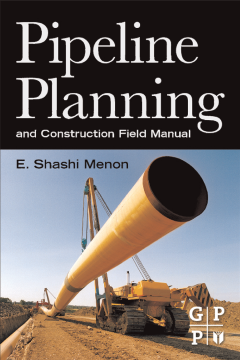
Additional Information
Book Details
Abstract
Pipeline Planning and Construction Field Manual aims to guide engineers and technicians in the processes of planning, designing, and construction of a pipeline system, as well as to provide the necessary tools for cost estimations, specifications, and field maintenance. The text includes understandable pipeline schematics, tables, and DIY checklists. This source is a collaborative work of a team of experts with over 180 years of combined experience throughout the United States and other countries in pipeline planning and construction.
Comprised of 21 chapters, the book walks readers through the steps of pipeline construction and management. The comprehensive guide that this source provides enables engineers and technicians to manage routine auditing of technical work output relative to technical input and established expectations and standards, and to assess and estimate the work, including design integrity and product requirements, from its research to completion.
Design, piping, civil, mechanical, petroleum, chemical, project production and project reservoir engineers, including novices and students, will find this book invaluable for their engineering practices.
- Back-of-the envelope calculations
- Checklists for maintenance operations
- Checklists for environmental compliance
- Simulations, modeling tools and equipment design
- Guide for pump and pumping station placement
"This general purpose guide for engineers provides detailed practical information on the design and construction of pipelines and attendant facilities. Authored by a team of experts with extensive pipeline experience, the volume presents a comprehensive look at design criteria, planning considerations, and testing methodologies for many common tasks involved in pipeline construction. Topics discussed include route selection, environmental impact and regulations, right-of-way concerns, materials options, pipe strength, hydraulic analysis, pump and valve stations, leak detection, hydrostatic testing, and operations and maintenance protocols. Technical drawings, tables, and relevant formulas and equations are provided throughout."--Reference and Research Book News
